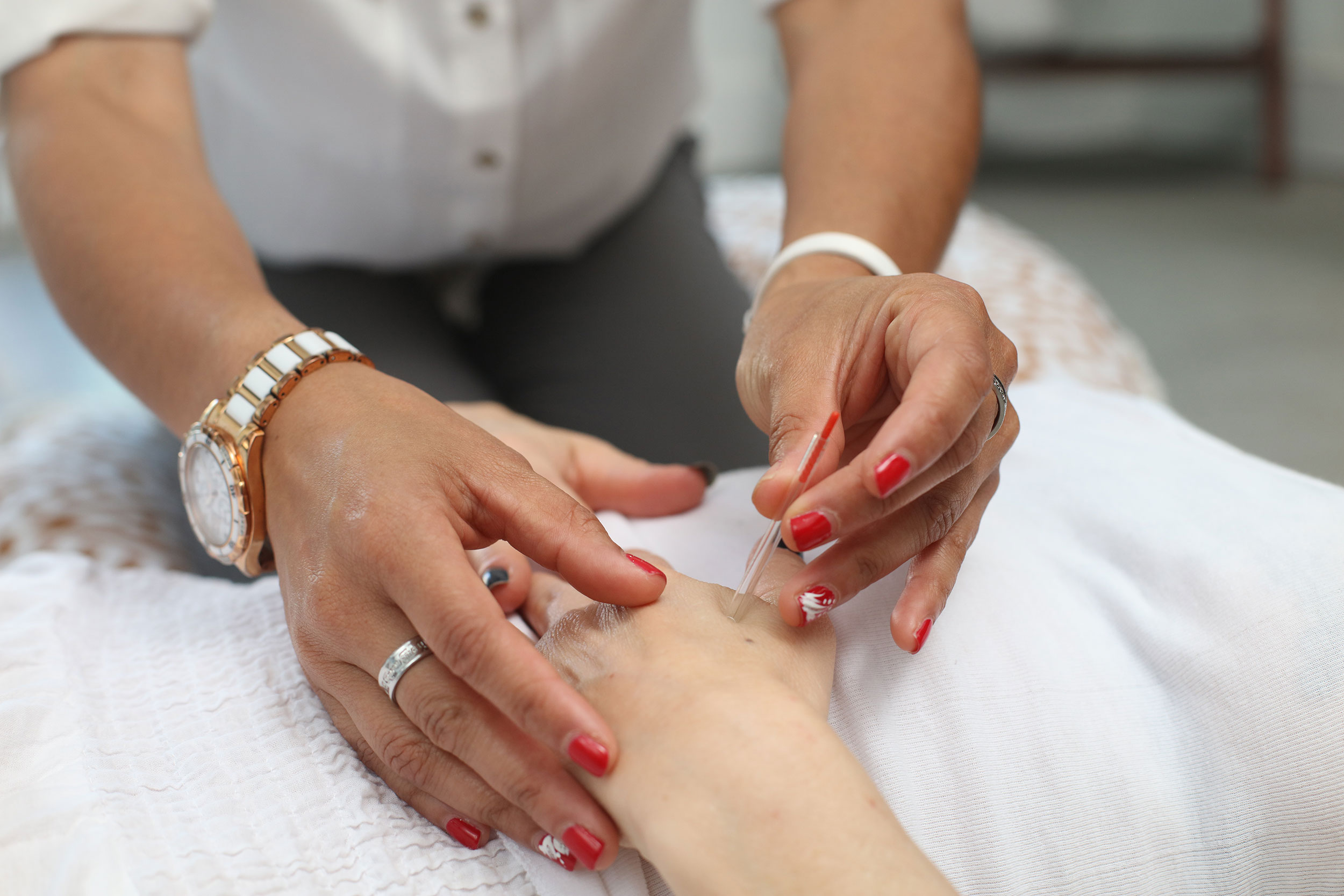
Dry Needling

Dry Needling is an invasive technique used by trained physical therapists to treat myofascial pain that uses a dry needle, without medication or injection, which is inserted into areas of the muscle known as trigger points. A trigger point describes a taut band of skeletal muscle located within a larger muscle group. Trigger points can be tender to the touch and can refer pain to distant parts of the body. Physical therapists utilize dry needling with the goal of releasing/inactivating the trigger points and relieving pain. Preliminary research supports that dry needling improves pain control, reduces muscle tension, normalizes biochemical and electrical dysfunction of motor endplates, and facilitates an accelerated return to active rehabilitation.
What Does It Treat
What does it treat? Dry needling is almost always used as a part of an overall plan that will likely include some type of exercise, manual therapy, and education. Dry needling is used to increase range of motion that may be limited due to muscle tightness or scar tissue. Dry needling treats a variety of problems, but not limited to:
- Acute/Chronic injuries
- Headaches/Neck pain Back pain
- Tendinitis Muscle Spasms
- Sciatica/Hip pain
- Muscle strains
- Fibromyalgia
- Overuse syndromes, such as “Tennis/Golfer’s Elbow”
- Patellar Femoral Pain Syndrome
What to Expect
- You may be sore right after treatment where Dry Needling was used. This does not always happen, but it is normal. Soreness may begin in a few hours or even the next day. The soreness may be different for each person. It usually feels like you had a hard workout at the gym. Soreness usually lasts 24-48 hours. Tell your provider at your next visit how long the soreness lasted.
- Bruising from Dry Needling is possible. Some areas are more likely to bruise than others. The shoulders, chest, face and portions of the arms and legs are more likely to bruise than other areas. Large bruising is not common, but can happen. Use ice to help decrease the bruising. If you are worried, please call your provider.
- It is common to feel tired/fatigued, energized, emotional, giggly or “out of it” after treatment. This is a normal and can last up to an hour or two after treatment. If this lasts more than a day contact your provider as a precaution.
Rarely, Dry Needling may actually make your symptoms worse. If this continues past the 24-48 hours, keep note of it. This can help your therapist change your treatment plan if needed. This does not mean Dry Needling cannot help your condition.
